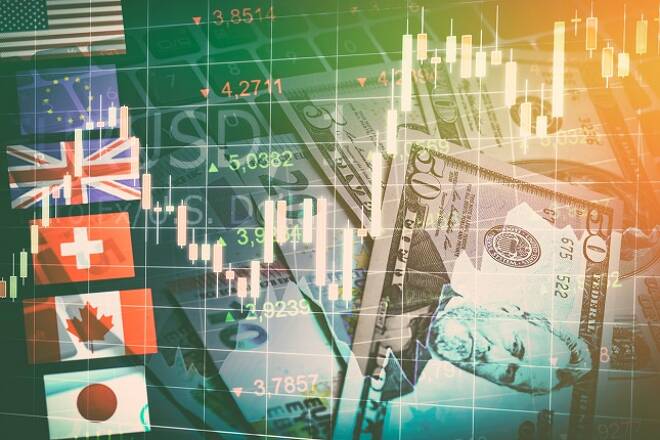Advertisement
Advertisement
Asia Open: Another WHO Emergency Upgrade?
By:
The FOMC decision was in line with market pricing; I'm not going to waste bandwidth dissecting the verbal gymnastics other than to say there were enough dovish hints to suggest there aren't very many hawkish scenarios on the Feds radar. And while no game-changers the statement does suggest the Fed is keeping a very close eye on any signs a softening economy, but that view might be a stretch.
The FOMC decision was in line with market pricing; I’m not going to waste bandwidth dissecting the verbal gymnastics other than to say there were enough dovish hints to suggest there aren’t very many hawkish scenarios on the Feds radar. And while no game-changers the statement does suggest the Fed is keeping a very close eye on any signs a softening economy, but that view might be a stretch.
With WHO considering a high-level emergency directive after the latest headcount sadly soared to 170 people. It’s becoming more evident to market participants the balance of risk will remain in the flu cycle much longer than expected.
At a minimum until the transitory period when concrete evidence that containment is working and that infection rates are slowing. But probably beyond due to the negative impact the virus will have on Chinas production and consumption data due to the number of stores and factory closures. All of which could hurt the global data given that China’s factories are a large and very significant cog in the worldwide supply chain.
And pouring salt on the wound, US trade hawks suggest no tariff break despite the devastating economic impact of the flu.
It’s going to be challenging to put concerns over the Coronavirus to one side, but fortunately for risk, the robust data in the US should at least be able to keep risk on a wobbly but even keel.
Oil markets
Just as bearish sentiment was peaking owing the lack of incremental bad news on Coronavirus, oil prices were dealt the cruelest hand of them all after the EIA reported that American crude inventories rose by a bearish to consensus 3.5 million barrels.
Not only was there report a momentum stopper, but it was a stark reminder of the big as life global supply overhang that continues to hang like an anvil under the market nose.
But with trader busily trying trudge through the unenviable task of figuring out the potential demand devastation impact from the Coronavirus. When viewed through the Wuhan flu lens, it’s possibly even more damaging as timing is everything when it comes to market price action, even more so in the finely balanced supply and demand action that continues to play out in the global oil markets.
If there’s a silver lining, the likely hood of a supply response from OPEC and possibly sooner than the planned March meeting should provide some semblance of a floor until trader can better come to grips with the demand deviation fallout from this insidious flu ravaging China.
Gold markets
Gold rallied during Fed Powel’s post-FOMC speech after the Chair touched on all the market sensitivities suggesting to gold investors that on the balance of his tonality and including a reference to Coronavirus, risks look more than sufficient to support stronger gold prices. Furthermore, the language on inflation where the Chair indicated that the Committee is not comfortable with inflation being persistently below target saw US yields drift lower post FOMC, which is very supportive for gold.
Also, if you’re in the camp and you think the Fed is too optimistic about growth, which is attracting more attention, there aren’t too many hawkish Fed scenarios on the immediate horizon, which should provide the ultimate support for gold prices.
Concerns over the Coronavirus continue to rise as the WHO is now considering an emergency pronouncement, and news headlines will continue to focus on further travel restrictions, which should continue to support gold as will the news of temporary store and factory shutdowns. The closure will eventually have a real and discernible negative impact on the next on China production and consumption data and could impact the global scrim, given how critical China factory is to the overall global supply chain.
At a minimum, gold remain bid until the Wuhan flu becomes a transitory event. Still, with an array of risk simmering on the backburner, gold should remain in demand for the foreseeable future.
Currency Markets
Living in Bangkok, I didn’t think I was at the epicenter of Wuhan’s risk, but clearly, the currency markets believe. Hence, as not to unexpectedly, the THB continues to languish with USDTHB slicing through the 31 levels like a hot knife through shrimp toast. Beyond the well-document tourism impact, speculators are leaning hard on the possibility of a rate cut at some time this year, given the expected economic hit from the drop in tourism revenues.
About the Author
Stephen Innescontributor
With more than 25 years of experience, Stephen Innes has a deep-seated knowledge of G10 and Asian currency markets as well as precious metal and oil markets.
Advertisement
